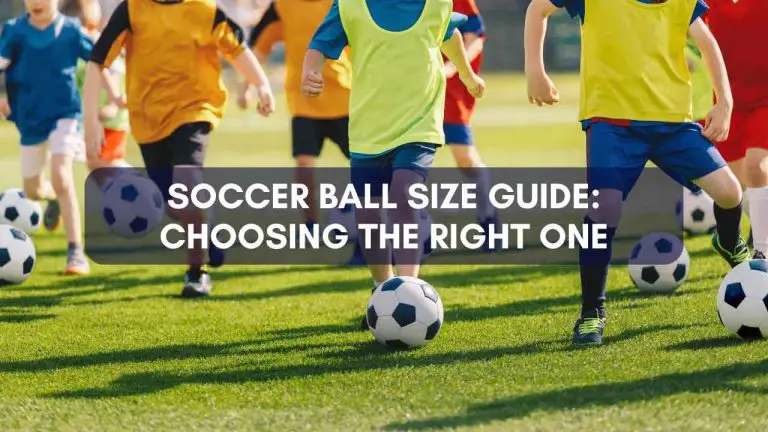Keeping Soccer Ball Air Pressure Just Right
Soccer, a globally cherished sport, enjoys a staggering following that spans continents and cultures. It is played and adored by millions, from professional athletes who compete on the grandest stages to casual enthusiasts who kick a soccer ball around in their neighborhood parks.
Amidst the vast and diverse world of soccer, there exists a seemingly unassuming factor that significantly influences the dynamics of the game—air pressure inside the soccer ball.
In this article, we delve deep into the realm of air pressure inside a soccer ball, exploring how it affects the beautiful game and why it’s crucial for players, coaches, and enthusiasts alike.
Understanding the soccer ball air pressure conundrum can enhance your appreciation for this beloved sport.

What the rules and regulations say
Soccer is a sport deeply rooted in tradition and governed by a set of precise rules and regulations. Among these rules is the atmospheric pressure of the soccer ball. How much air pressure can a soccer ball have inside? This question is one of the critical ones.
FIFA, the international governing body for soccer, provides clear guidelines regarding soccer ball pressure in its Laws of the Game.
FIFA regulations mandate that inside a soccer ball, there must be pressure equal to 0.6 and 1.1 bars (8.5-15.6 pounds per square inch or psi).
This range ensures that the ball is properly inflated, maintaining its shape and properties and allowing players to control it effectively during the game.

Why soccer ball air pressure matters
In the world of soccer, where precision and control reign supreme, air retention and air pressure within a soccer ball hold a pivotal role that cannot be underestimated.
The way a soccer ball interacts with the pitch, the players, and the elements is inherently tied to the pressure of air inside the ball. Let’s delve into the reasons why soccer ball pressure matters.
1. Ball control and passing accuracy
Imagine trying to thread a needle with a thick thread versus a thin one. The air pressure within a soccer ball determines its responsiveness to player commands. A properly inflated soccer ball offers superior control and allows players to execute precise passes and dribbles with ease.
This control is crucial for professionals and beginners alike, ensuring that the ball goes exactly where it’s intended.
2. Ball flight and shooting precision
For the striker looking to bend it like Beckham or the midfielder attempting a long-range screamer, the pressure within the soccer ball influences its flight path. Air pressure affects the trajectory, making it predictable. If the pressure is right, it’s easier for players to strike accurately.
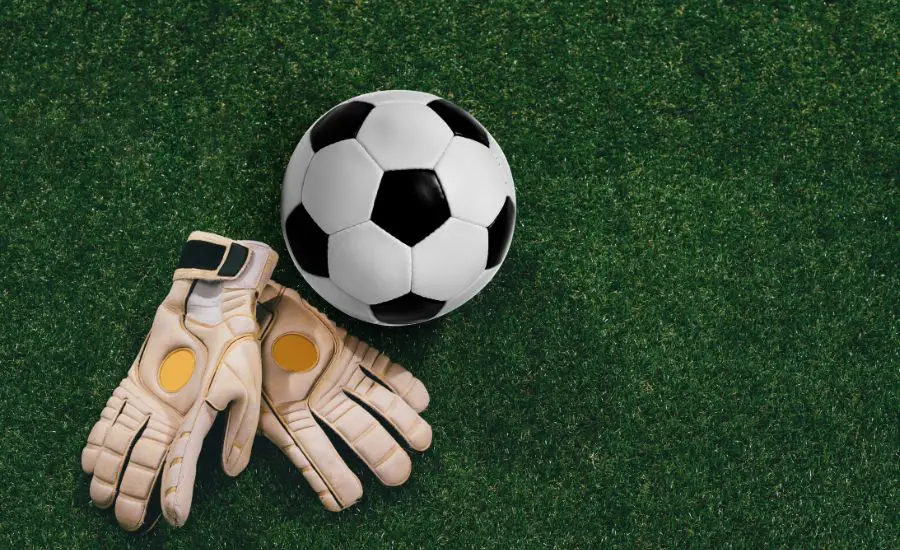
3. Impact on bounce and handling
The bounce of a soccer ball is directly related to its pressure. A ball with too much pressure can bounce unpredictably, potentially eluding a player’s reach or deflecting off target. On the other hand, soccer balls with too little pressure can feel sluggish and unresponsive, making them challenging to control.
A so-called bounce test or a squeeze test is sometimes used to check the pressure of a soccer ball, although they are not very accurate.
4. Consistency in gameplay
In professional soccer, regulations stipulate specific air pressure standards for match balls to ensure consistency. How much air pressure is allowed is determined by this regulation. It helps maintain fairness and predictability on the field during the crucial moments of a match ball.
Playing soccer with soccer balls that meet these standards ensures that teams compete on a level playing field.

5. Injury prevention
Improperly inflated soccer balls can increase the risk of injuries. Overinflated balls can feel hard and cause discomfort upon impact, while underinflated soccer balls may lead to twisted ankles or other injuries due to their unpredictability in movement.
So the pressure within a soccer ball is not merely a technicality; it’s an integral aspect of the game. Whether it’s for precise passing or accurate shooting, the pressure of a soccer ball affects the game on any level.

Different soccer ball sizes – different pressure
Soccer offers various ball sizes tailored to different age groups and playing styles. Each of these soccer ball sizes demands a unique air pressure indicator to optimize gameplay and safety.
Regulation soccer balls (size 5)
Regulation soccer balls, often referred to as “Size 5” balls, are the standard for professional matches and are used by players aged 12 and older.
The regulation soccer ball pressure for these balls is typically between 8.5 to 15.6 psi (pounds per square inch).
It’s essential to use an air pressure gauge to ensure that these balls meet the specified range before kick-off. This ensures that the ball behaves predictably and consistently throughout the match.

Youth soccer balls (sizes 3 and 4)
Youth soccer balls come in varying sizes, with “Size 3” for players aged 8 and under and “Size 4” for those between 8 and 12 years old. These smaller balls require lower pressure levels compared to regulation balls. Typically, “Size 3” balls should be inflated to around 7 to 10 psi, while “Size 4” balls may range from 8 to 12 psi.
Using the appropriate air pressure gauge for these youth-sized balls ensures a safer and more enjoyable experience for young players. Too much air pressure can lead to adverse effects.

Mini-balls and futsal balls
Mini-balls and futsal balls cater to specialized forms of soccer. Mini-balls, often used for training and skill development, require a pressure of approximately 4 to 6 psi. Futsal balls, designed for indoor soccer, typically range from 4.4 to 6.1 psi.
Adhering to these pressure guidelines is essential for maintaining the unique characteristics and gameplay dynamics of these specialized soccer balls.
To measure soccer ball pressure inside the mini-balls, a traditional pressure gauge is utilized as well.
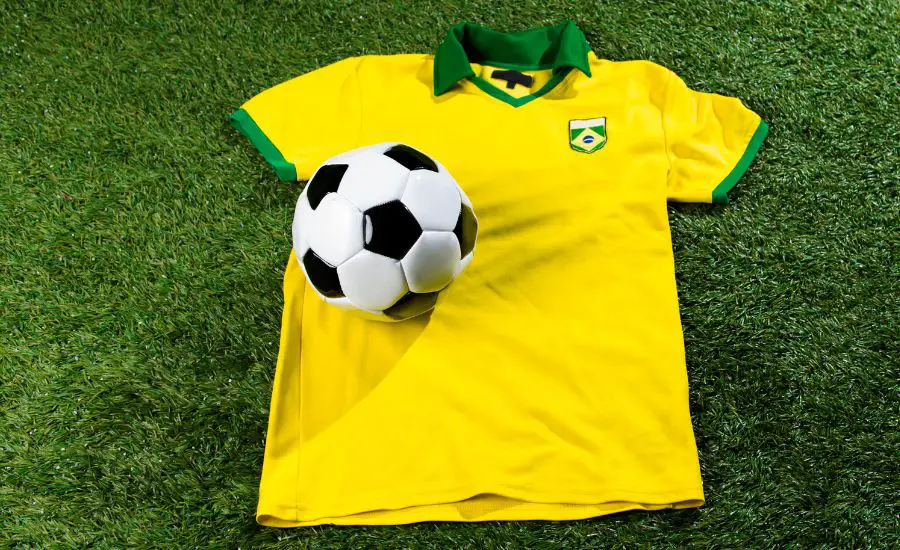
Beach soccer balls
Beach soccer played on sand, calls for a different ball altogether. Beach soccer balls are typically “Size 5” but have lower pressure levels, typically ranging from 3.5 to 4.6 psi. This lower pressure allows for better control and reduces the impact on players’ bodies when playing soccer matches on the unforgiving surface of the beach.
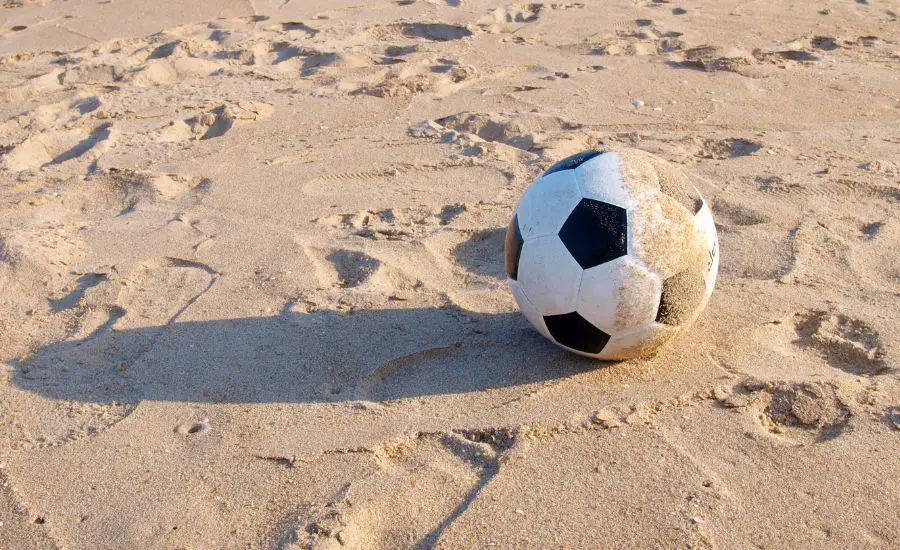
Maintaining a soccer ball
A soccer ball, like any piece of sports equipment, requires proper care and maintenance to ensure it performs at its best.
1. Regularly check ball pressure. As we’ve discussed, pressure is a critical factor in soccer ball performance. Use an air pressure gauge to measure and adjust the pressure, making sure the ball is properly inflated. Most pressure gauges employ a tiny meter with a needle indicating the psi. A soccer ball properly inflated ensures a consistent and predictable playing experience.
2. Avoid extreme temperatures. Extreme temperatures can affect the pressure inside your soccer ball. Avoid exposing it to direct sunlight, which can cause the ball to overinflate, or freezing conditions, which may lead to reduced pressure. Store your soccer ball in a cool, dry place when not in use.

3. Clean your ball. Dirt and debris can accumulate on the surface of your soccer ball, affecting its grip and flight. Regularly clean the ball with a damp cloth or sponge to maintain its performance.
4. Use the right inflation needle. When inflating your soccer ball, use the appropriate inflation needle designed for sports balls. Using the wrong type of needle can damage the valve and compromise the ball’s air retention.

5. Rotate balls in practice. If you have multiple soccer balls for practice, rotate their use regularly. This helps distribute wear and tear evenly among the balls and extends their lifespan.
6. Store properly. When not in use, store your soccer balls in a ball bag or a cool, dry place. Avoid storing them in damp or humid conditions, as this can lead to deterioration of the ball’s materials over time.
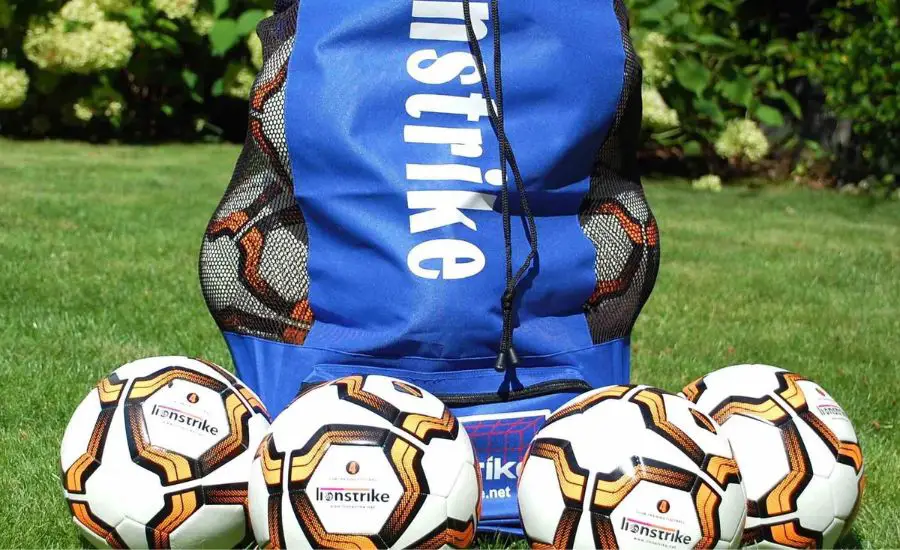
7. Inspect for damage. Before each use, inspect your soccer ball for any signs of damage, such as cracks, punctures, or loose seams. If you notice any issues, consider repairing or replacing the ball to ensure safety during play.
8. Consider ball conditioning products. There are specialized ball conditioning products available, such as ball wax or sealant, which can help maintain the ball’s grip and extend its lifespan.
By following these maintenance tips, you can prolong the life of your soccer ball, optimize its performance, and ensure a safer and more enjoyable experience on the field. Properly cared for, soccer balls contribute to the beauty of the game and the satisfaction of players at all levels.
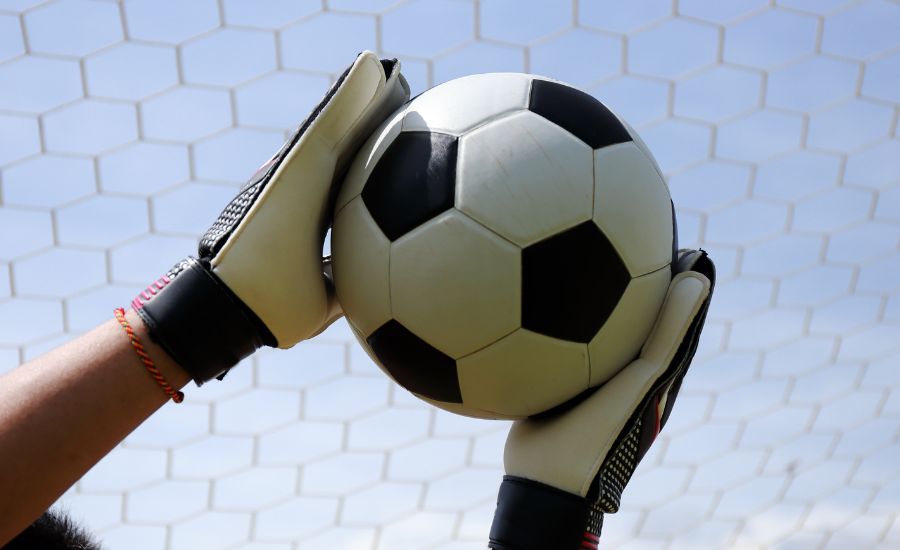
HOW TO CHECK SOCCER BALL PRESSURE
The Best Way – to measure the soccer ball pressure is to use an air pressure gauge. It is recommended that you use one of these gauges to measure the exact amount of pressure in a ball after inflating and before use. The large majority of air pressure gauges are analog.
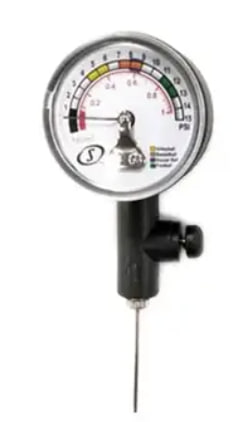
HOW TO MEASURE PRESSURE IF YOU DON’T HAVE A SOCCER PRESSURE GAUGE
The most Common Way – the squeeze test. This is technically not the best method of determining the correct soccer ball pressure, but it’s the most practical. This is what I witnessed as a coach every single time I observed a referee check a ball before one of our soccer matches. After a bit of experience with pumping up balls, you’ll develop a sense of what feels right, depending on game conditions and the type of soccer ball you have.
Final thoughts
Playing soccer, the game where the pursuit of precision and excellence reigns supreme, we often overlook the factor of soccer ball pressure.
We’ve explored the critical reasons why soccer ball pressure matters, including its influence on ball control, passing accuracy, shooting precision, and overall gameplay consistency.
We’ve also delved into the importance of tailoring the pressure to different ball sizes, using most air pressure gauges, and the essential maintenance tips that keep soccer balls in peak condition.
As you step onto the soccer field, whether in pursuit of a championship or a friendly kickabout, remember that the pressure within your soccer ball is a silent collaborator in the beautiful dance of the game. By mastering the art of maintaining and measuring soccer ball pressure (don’t forget the air pressure gauges), you empower yourself and your team.
So, the next time you lace up your cleats and step onto the pitch, take a moment to appreciate the significance of that soccer ball in your hands. It’s more than just an object; it’s the vessel of your passion, your skill, and your determination.
Through the right pressure, the soccer ball becomes an extension of yourself, enabling you to perform feats that continue to amaze and inspire.
FAQ
How much psi should a soccer ball have?
The recommended pressure for a soccer ball varies by size:
• Size 5 (regulation): typically 8.5 to 15.6 psi
• Size 4 (youth): approximately 8 to 12 psi
• Size 3 (youth): around 7 to 10 psi
Ensure you check the manufacturer’s guidelines for the specific soccer ball you have.
How do you know how much air to put in a soccer ball?
To determine the right amount of air for a soccer ball:
1. Use an air pressure gauge.
2. Check the manufacturer’s recommendations or regulations.
3. Inflate the ball within the specified psi range for its size.
4. Gauge the pressure as you inflate the soccer ball to avoid overinflation.
5. Adjust as needed for desired firmness and performance.
How much psi do I need for a size 3 soccer ball?
To inflate a Size 3 soccer ball properly, the recommended pressure typically falls within the range of 7 to 10 psi. However, it’s a good practice to check the manufacturer’s guidelines or any specific recommendations provided so that the ball is properly inflated. Use the pressure gauge to make sure you achieve the suitable pressure.
What is the air pressure in a ball used in football?
In American football, the recommended pressure for a football, also known as a pigskin, is typically around 12.5 to 13.5 psi (pounds per sq. inch). However, it’s essential to check the specific regulations and guidelines of the league or organization you are playing in, as they may have variations in estimations of a properly inflated ball.

Jason Harris is a good football player, since he was a teenager he started his way and improved his skills. We appreciate Jason’s contribution to our blog because the knowledge he shares has been tested by time and many years of football practice. Now he constantly follows football news, hones his skills, and of course shares current thoughts with our readers.

